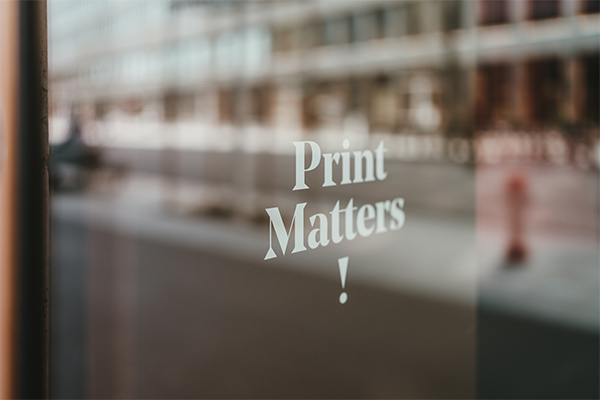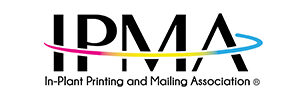Leaders wear many hats: Soothsayer, Accountant, Buyer, Sales, Production, Human Resources, Education, Mentor, Guide, Cheerleader, and so on. Is this really different than before? No, is it more important than before? YES! How you and your team react in the next year during this recovery will be decisive. It will determine whether your operation will exist, shrink, remain flat or get back on the path to growth.
We have survived a world pandemic now for a year and half. And yet this impact of the ongoing pandemic and its impact on the economy are still creating havoc in today’s economy. We are dealing with rampant inflation due in part to the pandemic, but also due in part to factors pre-pandemic such as mill closures or change over to other product lines, and the shortage not of trucks but of drivers. All this is putting pressures not just in printing, but across the board. I.E. Restaurants cannot keep up with the ever-changing cost of food or supplies, retailers having problems restocking.
Inflation alone generally means that pressures will come to bear to encourage marketing reduction, with budget dollars cut in hopes of providing dollars that will support the organization through hard times. One can expect that marketers will push reduction of print and direct mail to less expensive e-marketing and social media, which are proffered as less expensive mediums. Or are they? Does a marketing mechanism work if is only 1/8 the impact of direct mail in responses; does not have the trust factor that print has; does it drive customers to web pages or buying decisions? Yes, it does at least provide a method for keeping an organization’s name in the public, but are the returns worth the expense? Historically, those companies in the past that have either maintained their marketing budget or expanded it are those who are first to recover. Does it not make sense to be marketing with a tool that has proven effectiveness, confidence and trust?
What is a printing manager to do? Cost of materials is changing almost weekly from plates to paper stocks. The labor pool traditionally has been small and is even smaller now. The pandemic forced many of us to reduce our workforce, possibly change our operational processes from offset to digital, looking towards the future with investment in inkjet technology if possible or in the near future. We as printers must change the perception that print and direct mail is “dead” and show marketers and upper management that we must use the most effective method of communicating with our constituents. Print is still the best of all mediums.

You certainly must do more than share some facts. You as managers must review, rethink, develop new opportunities, new services, and methods of meeting your customer needs. Leadership in these trying times means you have to monitor your supply chain more closely than ever. You have to depend upon your staff to excel in their roles as never before, because there are fewer qualified people on your staff and even fewer that are available to hired. Your efforts in employee development will starkly come to light. Were you preparing your staff, your operation for a pandemic? No. You were, however, preparing your staff and operation to find new and better means of communication, better methods of production, finding resources in your staff knowledge pool that you had not fully tapped, and still you will find they have more in them then they knew.
Now is the time for you to invest in staff development. Allow them to play their part. Define their roles in how the operation will meet the challenges we are currently facing and the ones still to come. You will need to increase your communication levels with all your staff, not just your customer service or sales people, but your operators, and supervisors. Each must play their part, share their skills and knowledge to help you traverse the ever changing client needs, and determine how to streamline your operational procedures to reduce costs internally. Designing new methods of production, and watching and closely monitoring your materials and supplies will be critical. And utilizing the strengths of your staff and equipment to maximize efforts in meeting customer needs is imperative.

Encourage your staff to increase their customer service strengths– to go the extra mile to enhance the customer’s experience. Encourage your customer service and sales staff to engage with your customer, discover what their goals are, what their pain points are, and then help them devise a course of action that meets their needs. Teach them the true power of marketing is with an Omni-channel approach that includes print media brochures, flyers, posters, and personalized direct mail. Teach them how to get the most for their marketing dollars by incorporating direct mail, e-marketing, social media, QR codes that take them to actionable web pages.
More importantly, you need to prompt your customer into thinking about how their customers such as themselves react or respond to various media techniques. How many email accounts do they have? How many emails do they trash without reading, and, of those they read, how many do they take action on? On web-based marketing, how many customers utilize the web to research? If your product or service web page does not include a specific keyword, will the prospect find you? How aggravated does your customer get from pop-ups sent due to his/her search? Most people block pop-ups and do not have a level of trust or confidence to buy from pop-ups.
One cannot afford to manage or lead the same way as before. Be forward thinking. Be brave. Be inclusive, and utilize all your instincts, your strengths, your assets… those are really your staff, your people, not your equipment, certainly not just you. If ever tomorrow was a new day, then we are now truly at that precipice. Plan, engage, actualize, review and control…repeat until you get it right.

John Yerger has been in printing all of his life starting with a family newspaper and Printshop. John has worked in almost every aspect of printing from hot type to cold, letterpress, flexography and offset, sheet-fed and roll-fed. With over 35 years in private sector printing and 13 years of experience in higher education, John has more 28 years of senior management experience specializing in growing and restructuring print operations to maximize profits and revenues.
He has used his experience to consult with other operations to better manage their workflow and make their operations more productive in Texas and Arkansas. Under John’s management, Stephen F. Austin State University earned the 2014 IPMA Print Center of the Year Award. University of Nebraska-Lincoln Printing Services hosted the IPMA Roadshow in 2019. John supervises printing, 3 digital printing centers, promotional products, over 480 MFD’s, and Mail services with a staff of 48. John has increased sales volume and been ranked in the top 10 higher education in-plants in the last four years increasing revenue for 3 of his 4 years at UNL, creating a self-sustaining operation.
